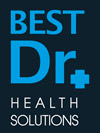Traditional Open-Heart Bypass Surgery (on-pump):
Heart Bypass Surgery is the procedure that reroutes the blood around a blockage in the coronary artery, creating an alternative pathway for blood to deliver important nutrients and oxygen to the heart muscle. To increase blood flow, grafts are created by using portions of another artery or vein from the patient’s body. The most commonly used vessels are the internal mammary arteries, which are inside the chest wall or the greater saphenous veins, which are in the leg. These vessels are “spares.” Blood flow is usually not affected by removing them.
The surgeon makes an incision down the center of the chest. After the chest is opened, the heart is stopped and a heart-lung machine takes over blood circulation to the body.
The Saphenous Vein is removed from the leg and one end of the Saphenous Vein graft is sewn to the largest artery in the body (Aorta) and the other end is sewn past the obstruction into the coronary artery. Or the Internal Mammary Artery is freed at one end in the chest and sewn past the obstruction into the Coronary Artery. Either graft reroutes the flow of oxygen-rich blood to the heart muscle. The blockages in the coronary artery are not removed but will be bypassed using the Saphenous Vein from the leg and/or the Internal Mammary Artery from the chest.
A patient may undergo one, two, three or more bypass grafts, depending on how many coronary arteries are blocked.
The surgery carries many benefits for patients who have serious cardiovascular disease. Actually the operation can save patient’s life in case of having a heart attack or in cases with high risk of having one. If the patient has ongoing angina and shortness of breath from diseased heart arteries, elective coronary bypass surgery is highly effective at eliminating or reducing discomfort.
Risk of complications is higher only for emergency coronary bypass surgeries, such as for patients who are having a heart attack, when compared to elective surgery for treatment of angina and other symptoms. Additionally, patients may be at higher risk if they are over 70 years old, are female or have already had heart surgery. Patients who have other serious conditions, such as diabetes, peripheral vascular disease, kidney disease or lung disease, may also be at higher risk.
In addition people who have Minimally Invasive Bypass Surgery recover faster, have significantly less pain, and experience fewer post-surgical complications than those who undergo traditional open-heart coronary bypass surgery.
Off-Pump or Beating-Heart Surgery:
This procedure allows surgery to be done on the still-beating heart using special equipment to stabilize or quiet the area of the heart the surgeon is working on.
This type of surgery is difficult and challenging because the heart is still moving. Because of this, it is not an option for everyone. To perform an open-chest, Beating-Heart Bypass procedure, surgeons make an incision through the breastbone to gain access to the heart.
In many cases, surgeons do a partial sternotomy – which is a shorter incision through the breastbone than a full sternotomy. Unlike traditional bypass surgery, the heart is not stopped during a beating-heart bypass procedure.
This approach uses special devices to stabilize the part of the heart the surgeon is operating on. Like the traditional version of a Heart Bypass, either the Saphenous Vein or Internal Mammary Artery is used to create the graft, used to bypass the blocked coronary arteries.
Advantages of heart bypass surgery:
- The operation can save patient’s life in case of having a heart attack or in cases with high risk of having one.
- If you have ongoing angina and shortness of breath from diseased heart arteries, elective bypass surgery is highly effective at eliminating or reducing discomfort.
Risk of complications is higher only for emergency coronary bypass surgeries, such as for patients who are having a heart attack, when compared to elective surgery for treatment of angina and other symptoms. Additionally, patients may be at higher risk if they are over 70 years old, are female or have already had heart surgery. Patients who have other serious conditions, such as diabetes, peripheral vascular disease, kidney disease or lung disease, may also be at higher risk.
People who have Minimally Invasive Bypass Surgery recover faster, have significantly less pain, and experience fewer post-surgical complications than those who undergo traditional open-heart coronary bypass surgery.





